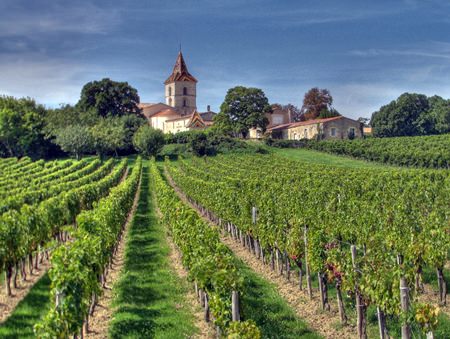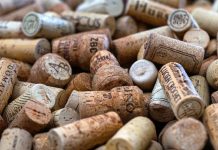In recent weeks, I’ve been trying quite a few South American reds and nearly always been impressed by their high quality. Chile of course has been making excellent wines for years and more recently Argentina has appeared on the international wine scene with some very fine wines, especially those made from Malbec, its signature grape. South American wines are mentioned regularly wine magazines like Wine Spectator and often receive high ratings from that most influential of wine critics, Robert Parker. And I’ll tell you why.
Mr Parker tends to prefer big authoritative, fruity wines with loads of body and character. When they’re good, he gives them a high rating which invariably encourages other wine makers to produce wines of a similar style. And so it goes on in a vicious circle. They sell like hot cakes in America and also presumably in Australia where there is a taste for hefty wines. It won’t last, you know. Fashions come and go, especially in the wine world and I bet you that during the coming years, public taste will drift towards lighter and fresher styles of wine which have always been popular in France and Italy.
 Vineyards in Bordeaux (Photo: Michael Clarke)
Vineyards in Bordeaux (Photo: Michael Clarke)
I can’t say that I share Mr Parker’s enthusiasm for these big reds. Sometimes they have an alcoholic content so high that after a couple of glasses you think twice about climbing on the water-buffalo, let alone the push-bike. Given the choice, I would invariably opt for a light French red. A decent bottle of Bordeaux will do me fine, thank you. Or even some of those attractive light and refreshing wines from the South of France which have become so much better in recent years. So this week, I’m returning to a couple of very pleasant French reds which make excellent everyday wines, or least they would have done in the Good Old Days when they cost about two hundred baht less.
These two L’Esprit de Bacchus (Spirit of Bacchus) wines are produced by Seignouret Frères, a distinguished company founded in 1830 and one of the oldest trading houses in Bordeaux, exporting wines world-wide. It’s actually a négociant, which is the French name for a company that buys grapes, juice or bulk wine which it then produces, bottles and markets on a larger scale under the its own label. A single négociant will invariably buy wines from almost anywhere in France and may have any number of different brands and labels. I have found that these wines tend to be reliable and not excessively expensive. Some of the best-known Burgundy producers are actually négociants, including top names like Jadot, Drouhin, and Bouchard Père & Fils. You’ve probably seen these wines in many outlets and they’re invariably good value.
L’Esprit de Bacchus, Graves 2012 (red) France (Bt. 739 @ Foodland)
The label of this wine carries the old-style Appellation Graves Contrôlée designation, which puts it a cut above the more basic Appellation Bordeaux Contrôlée. Since the French revised their wine classification system, the top category is now AOP (Appellation d’Origine Protégée) which indicates the geographical origin, quality and style of the wine. You’ll see the older AOC (like this one) for many years to come, especially on wines with a long life. Although it’s sold under a brand name, it actually originates at Château Saint Loubert, a family estate of about eighty acres and one of the oldest châteaux in the region. The wine is made by traditional methods and the vineyard has typical sandy, gravelly soil. In fact, it’s this gravelly soil that gives Graves its name. It has nothing to do with graves for the deceased, although no doubt some people make that assumption.
The wine is a lovely, deep red and long legs appear inside the glass when you swirl it around. You’ll probably pick up that typical Cabernet Sauvignon aroma of black fruit, cherry, a dash of spice and dried herbs. You might even notice a hint of dark chocolate which is one of the many surprising aromas that Cabernet can produce.
Made from a blend of 50% Cabernet Sauvignon and 50% Merlot the wine has a smooth, silky texture. It’s medium-bodied and as dry as they come, but the plentiful soft fruit balances the dryness. There’s a good foundation of supple tannin which persists beautifully through the long finish. At just 13% alcohol content, it would make a good partner for red meats, many Asian dishes and fairly strong cheeses. This wine even has ageing potential and you could probably keep it for up to five years if you have the somewhere cool enough.
L’Esprit de Bacchus, Merlot 2012 (red), France (Bt. 569 @ Foodland)
From the south of France, this is an attractive ruby-red wine. It’s a Vin de Pays, which is the older classification for French country wines from a specific region and a notch up from basic table wines. Vin de Pays means “wine of the land” or “country wine” but these days they’re usually labelled Indication Géographique Protégée (“Protected Geographical Region”) usually known as IGP. This bright ruby red wine is made from 100 percent Merlot grapes and has a lovely floral aroma of raspberry, dark fruit, dusty herbs and hints of leather. The wine has a good, dry medium body with mild tannins up front and plenty of fruit on the palette. There’s an attractive dry finish too, with tannic overtones. This is really quite an easy-drinker and would be fine with pizza, grilled meats or richly flavoured cheeses. It has an attractive traditional-looking label too, making the bottle appear rather more expensive than it actually is.
This is the style of easy-drinking earthy wine that you find in many a French bistro and a far removed from the big wines of South America. Quite honestly, this would be my choice for a daily red, if I could buy it at French prices. But sadly, the taxes on wine here push the prices ever skywards. There are only two choices of course: pay up or do without.




